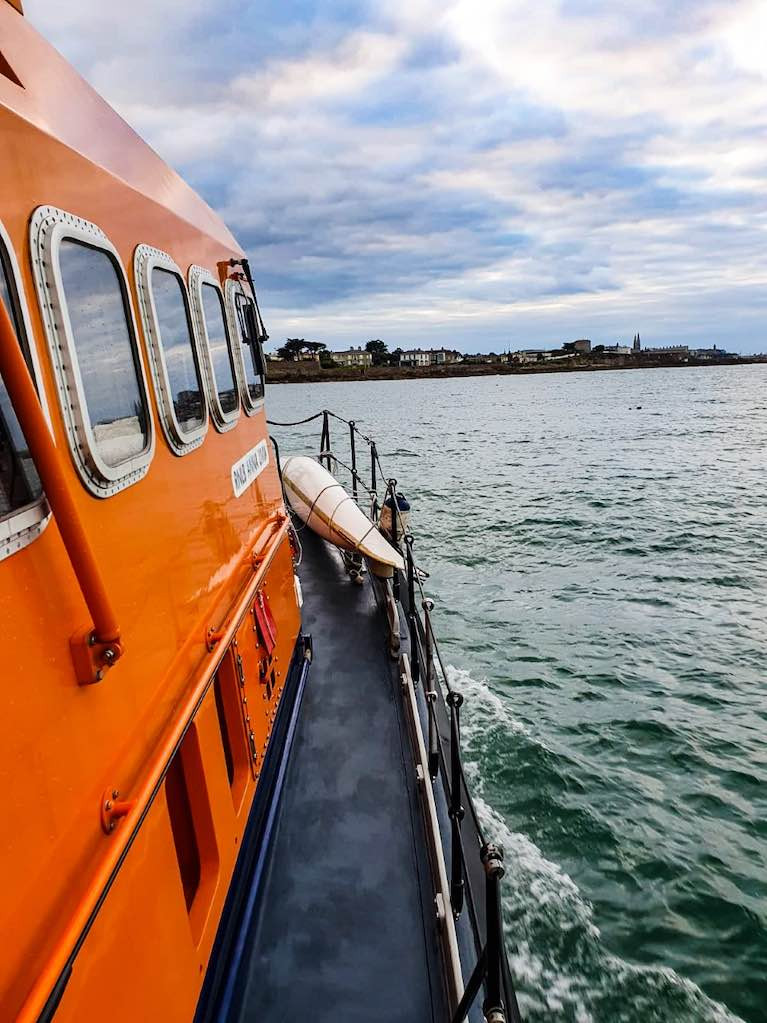While out on their first training exercise since COVID-19 restrictions were put in place in March, Dun Laoghaire Harbour RNLI yesterday evening (Monday 31 August) was requested by the Irish Coast Guard to respond to a kayaker who had capsized.
The all-weather lifeboat launched at 6:55 pm under Duty Coxswain David Branigan with seven crew on board and was carrying out routine training within the vicinity of Killiney Bay when they received an immediate tasking call. The crew quickly diverted course at 7:20 pm to search the area of coast between Dalkey and Colliemore Harbour.
The lifeboat used the tidal and wind direction as an indicator and located the two kayakers who had left Bullock Harbour together, one of which was in difficulty after capsizing and losing their paddle. The second kayaker helped the person in difficulty to right their kayak and assisted them until the lifeboat crew arrived on scene.
The casualty was transferred on board and casualty care assessed by the volunteer crew and deemed in good health and was then taken ashore at Dun Laoghaire lifeboat station rather than Bullock Harbour due to the mid-tide at the time. The other person involved made their way back to Bullock Harbour unassisted.
Dun Laoghaire Irish Coast Guard shore unit and the Irish Coast Guard helicopter Rescue 116 were also on scene.
Weather conditions at the were described as fresh with a southerly wind.
Speaking following the call out, David Branigan, Dun Laoghaire RNLI Duty lifeboat Coxswain said: ‘ This was our first training exercise since covid-19 restrictions were put in place, and by chance, a call from the Irish Coast Guard was received over the radio. Following a quick search of the area, we were very glad to find the kayakers. It was reassuring to find the person in difficulty had stayed with their kayak and bunched up with the second kayak, this made it much easier for us to find them. They also had a means of calling the Coast Guard for help which is very important. Our crew were very pleased with the outcome and happy to have safely returned the person to shore’.































































